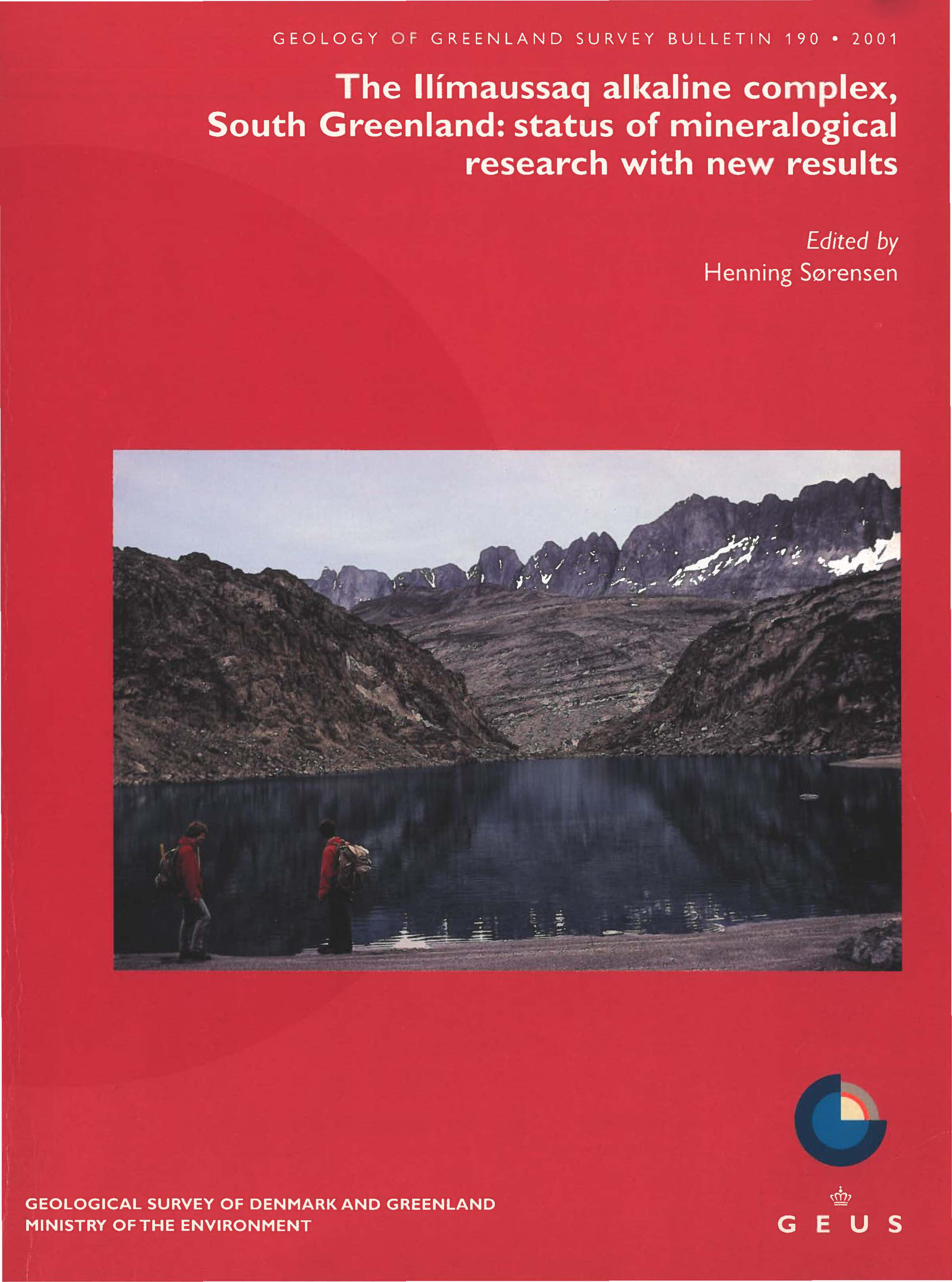Brief introduction to the geology of the Ilímaussaq alkaline complex, South Greenland, and its exploration history
DOI:
https://doi.org/10.34194/ggub.v190.5170Keywords:
agpaite, alkaline complex, Ilímaussaq, nepheline syenites, South Greenland, uranium depositAbstract
The Ilímaussaq alkaline complex, the type locality of agpaitic nepheline syenites, is made up of three intrusive phases, (1) augite syenite, (2) alkali acid rocks and (3) agpaitic nepheline syenites which occupy the major part of the complex. The agpaitic phase comprises a roof series, a floor series and an intermediate sequence of rocks. The roof series crystallised from the roof downwards beginning with non-agpaitic pulaskite and ending with distinctly agpaitic naujaite. The exposed part of the floor series is made up of the layered agpaitic nepheline syenite kakortokite. The intermediate sequence consists of several types of distinctly agpaitic lujavrites which are accompanied by occurrences of uranium and other rare elements. The complex was first visited by K.L. Giesecke in 1806 and 1809. The first detailed mapping of the complex was carried out by N.V. Ussing in 1900 and 1908. He presented a precise description of the major rock types and an illuminating discussion of the petrology of the complex in his 1912 memoir. In the period 1912–1955 there was very limited activity in the complex. Exploration for radioactive minerals in Ilímaussaq was initiated in 1955 and in subsequent years followed by geological mapping carried out by the Geological Survey of Greenland. This led to a series of detailed studies of the occurrences of not only U, but also Be, Nb, REE and Zr, and to mineralogical, geochemical and petrological studies as well as commercial evaluation and drilling.
Downloads
Published
Issue
Section
License
This article is distributed under a CC-BY 4.0 licence, permitting free redistribution and reproduction for any purpose, even commercial, provided proper citation of the original work. Author(s) retain copyright over the article contents.


